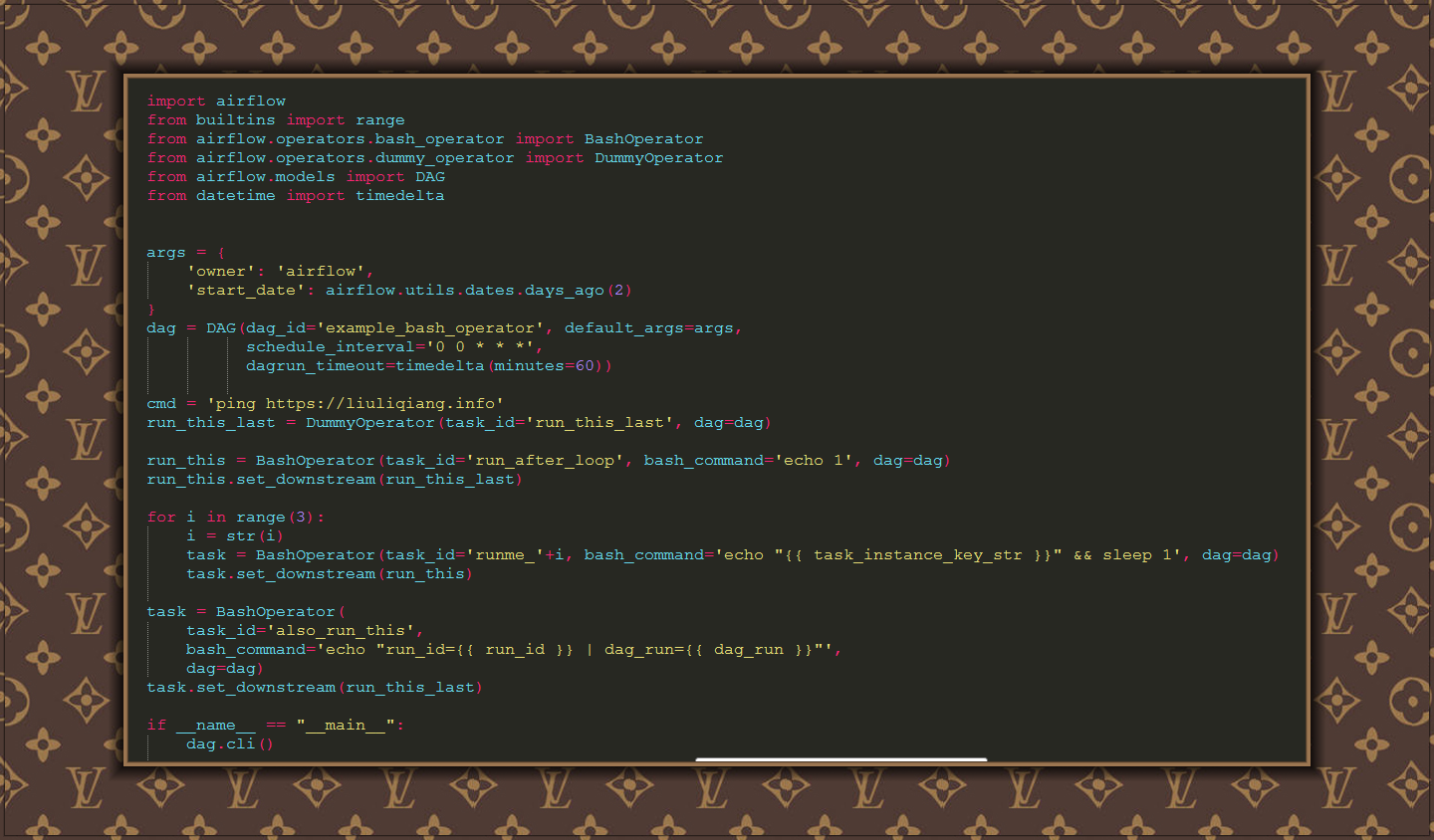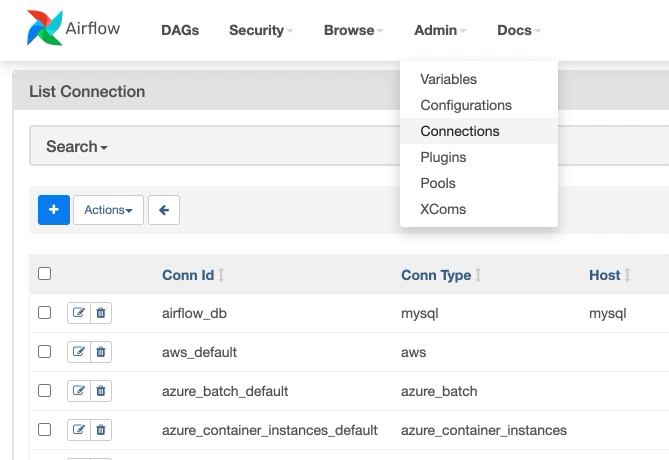
In this case you should decorate your sensor withĪ_mode_only(). Reschedule mode comes with a caveat that your sensor cannot maintain internal stateīetween rescheduled executions.

This is useful when you can tolerate a longer poll interval and expect to be Task to be rescheduled, rather than blocking a worker slot between pokes. Sensors have a powerful feature called 'reschedule' mode which allows the sensor to

You can create any sensor your want by extending the ĭefining a poke method to poll your external state and evaluate the success criteria. presence of a file) on a regular interval until a The execute gets called only during a DAG run.Īirflow provides a primitive for a special kind of operator, whose purpose is to There will result in many unnecessary database connections. The constructor gets called whenever Airflow parses a DAG which happens frequently. You should create hook only in the execute method or any method which is called from execute.
AIRFLOW WITH PYTHON PASSWORD
The hook retrieves the auth parameters such as username and password from Airflowīackend and passes the params to the .get_connection(). When the operator invokes the query on the hook object, a new connection gets created if it doesn’t exist. get_first ( sql ) message = f "Hello " print ( message ) return message database ) sql = "select name from user" result = hook. database = database def execute ( self, context ): hook = MySqlHook ( mysql_conn_id = self. Export dynamic environment variables available for operators to useĬlass HelloDBOperator ( BaseOperator ): def _init_ ( self, name : str, mysql_conn_id : str, database : str, ** kwargs ) -> None : super ().(Optional) Adding IDE auto-completion support.Customize view of Apache from Airflow web UI.Customizing DAG Scheduling with Timetables.Configuring Flask Application for Airflow Webserver.Add tags to DAGs and use it for filtering in the UI.The latest version of airflow on GitHub is already fixed that.
AIRFLOW WITH PYTHON CODE
So for clean use of my code samples, I had to specify version of flask that requires version of jinja2 compatible with airflow requirements.
AIRFLOW WITH PYTHON INSTALL
This means that although pipenv can install all required software, but it fails to lock dependencies. Then P圜harm would be able to automatically pick it up when you go into settings of project interpreter.Īirflow 1.10.3 from PyPi depends on flask>=1.0, =2.7.3, =2.10.1. venv in a project's root by adding export PIPENV_VENV_IN_PROJECT=1 into your.




 0 kommentar(er)
0 kommentar(er)
